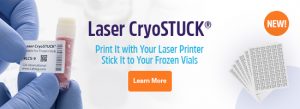 Employing mammalian cell lines is crucial in life science research, especially with new, more relevant models of disease engineered with induced pluripotent stem cells (iPSCs). Here, we’ve come up with some basic tips to help culture cell lines, regardless of their source.
Employing mammalian cell lines is crucial in life science research, especially with new, more relevant models of disease engineered with induced pluripotent stem cells (iPSCs). Here, we’ve come up with some basic tips to help culture cell lines, regardless of their source.
#1 – Authenticate before use
The moment you receive any new mammalian cell line, it’s worth verifying that the cells correspond to the line you’re supposed to have been given. Always make sure to carefully observe cellular morphology once cells are thawed and plated, as this will be a good first indicator that something is off. When purchasing a cell line, it’s important to obtain a Certificate of Analysis; however, authenticating cell lines on your own using a DNA-based method is also necessary to confirm that the aliquots given to you are not mislabeled, which is possible even when distributed by a vendor. Establishing a profile of short tandem repeats from each cell line is especially useful, as it will allow you to distinguish between the many cell lines grown in your lab. Karyotyping to identify the structural composition of the cell line’s chromosomes is also a good way to ensure that nothing outside the ordinary has occurred, particularly for stem cell lines. For non-human lines, isoenzyme analysis and mitochondrial DNA typing can also be used.1 New cell lines should also be tested for mycoplasma contamination upon entering lab, and where possible, kept separate until they are confirmed to be contamination free.
#2 – Bank as many aliquots as possible
If you’ve created your own line, you should have approximately 10 to 20 seed stock vials containing 1–5 × 106 cells each, which should not be accessed.1 If you’re propagating a cell line from one or two vials of cells, bank as many low-passage vials as you can and keep a stock ready of the passage number you plan to work with. It’s imperative that you perform an approximate calculation of how many cells you might need from a specific passage number over several months, as performing experiments on cells from different passages can lead to hugely variable results, depending on the cell line and the difference in passage number. By assessing your experimental needs beforehand, you’ll know how many vials to bank of each specific passage number.
#3 – Freeze cells in proper conditions
It’s sometimes worth testing your freezing conditions before going full speed ahead with experimenting on your new cell line. Though growth media supplemented with 10% DMSO and 10% FBS is one of the most typical vitrification solutions, it’s not always suitable. Increasing the percentage of FBS, using glycerol, or buying vitrification media represent other options, but you won’t know how efficiently your cells survive until you’ve tried to freeze then thaw them at least once or twice. Even if you’re relying on a previously written freezing protocol, you’ll want to make sure that it works properly.
#4 – Label your cell lines appropriately
One of the main culprits of cell line misidentification is mislabeled and hard-to-identify tubes.1 The best way to identify tubes is with barcode labels, which ensure you never choose the wrong tube by adding another layer of security prior to each manipulation. The labels used should be tailored for the environment your cells will encounter. For cryogenic storage, cryogenic labels offer the maximum resistance and won’t fail due to immersion in liquid nitrogen or exposure to extreme cold. At the very least, cryo labels should be identified with your name (or initials), the name of the cell line, the date it was handled, and the passage number.
#5 – Handle the cells consistently
When handling cell lines, make sure to be as consistent as possible. When counting cells, use the same method each time, whether you’re using a hemacytometer or a cell counting machine. When passaging cells, write up a standard operating procedure (SOP) and stick to it. Try to use the same passage number for each experiment to reduce variability, and never let the cells grow for too many passages (30–40 times is the maximum for most lines, though some might senesce or alter their characteristics much earlier). In fact, it’s best to keep a strict record of your cell line usage, ideally with a laboratory information management system (LIMS) and barcode labels, so you can identify when and where something went wrong.
#6 – Work with only 1 line at a time
It’s highly recommended to work with only one cell line at a time in the hood.1 Working with more than one risks cross-contamination of the cell lines, which may be much more difficult to detect than contamination with bacteria or fungi as cells from two different mammalian lines may look indistinguishable from each other.
#7 – Manage contamination
Speaking of contamination, it’s always in your best interest to avoid bacterial and fungal contaminants as much as possible. Checking your cells under the microscope frequently will help with this, and for media that comes with a pH indicator, an unexpected color change will quickly alert you that something is off. Some basic tips for keeping your cultures free of contamination include autoclaving all non-sterile consumables, spraying everything, including the cabinet itself, with 70% ethanol before use, and adding bleach to any tubes or plates that have become heavily contaminated. Cleaning agents can also be added to water baths, while antibiotics can be added to the cultures themselves (e.g. penicillin/streptomycin mixtures); however, it’s imperative to test these agents to make sure they aren’t toxic and don’t interfere with the characteristics of the line.
#8 – Take proper safety precautions
Safety is of critical importance when working with a new cell line. The primary hazard that comes with any new line is the risk that it carries a harmful virus. It’s recommended that for any lab working with primary human materials, all personnel should be vaccinated for hepatitis B. Regardless, cleaning up with disinfectant after you’re done and avoiding clutter are some of the best ways to keep safe. Always make sure that any biohazard disposal containers aren’t too full; picking up biohazard bags with too many plates risks spilling on the floor, while not consistently emptying containers used to aspirate media means that the liquid can eventually be sucked into the pressure-generating mechanism of the biosafety cabinet, ultimately ruining the cabinet itself.
#9 – Train staff to work with your cell lines
Don’t just train new staff to work with cell culture, then let them grow and culture cell lines at will. Train them to work directly with the cell lines they’ll need to use, giving explicit instructions for each one, including which type of media to use, as it can vary from cell line to cell line. Certain cell lines may also require supplementation with amino acids, glutamine, or pyruvate. Furthermore, certain lines will detach easily from the flask, while others require trypsin or a small concentration of EDTA. Even for simple, easy-to-manipulate lines, it’s still worth making sure new personnel understand exactly when and how to passage and treat the cells.
#10 – Verify the quality of media and sera
Media and sera quality can be tricky due to the variable nature of the different lots. Buying in bulk helps here, especially for sera, as you can buy as much as possible from one specific lot to ensure your treat your cells consistently. When forced to purchase a new lot of a product, it’s always a good idea to test it first by measuring characteristics like double time against the old lot of media and/or sera.
#11 – Be patient
It’s tempting to get right into experimentation the moment your cells arrive. In reality, it can take some time to get a good feel for how your cells are likely to behave. Not every aliquot is made equal, even if the source is the same. It’s worth taking the time to implement every strategy necessary to keep your work as consistent and accurate as possible.
LabTAG by GA International is a leading manufacturer of high-performance specialty labels and a supplier of identification solutions used in research and medical labs as well as healthcare institutions.
Reference:
- Geraghty RJ, Capes-Davis A, Davis JM, et al. Guidelines for the use of cell lines in biomedical research. Br J Cancer. 2014;111(6):1021-1046.



